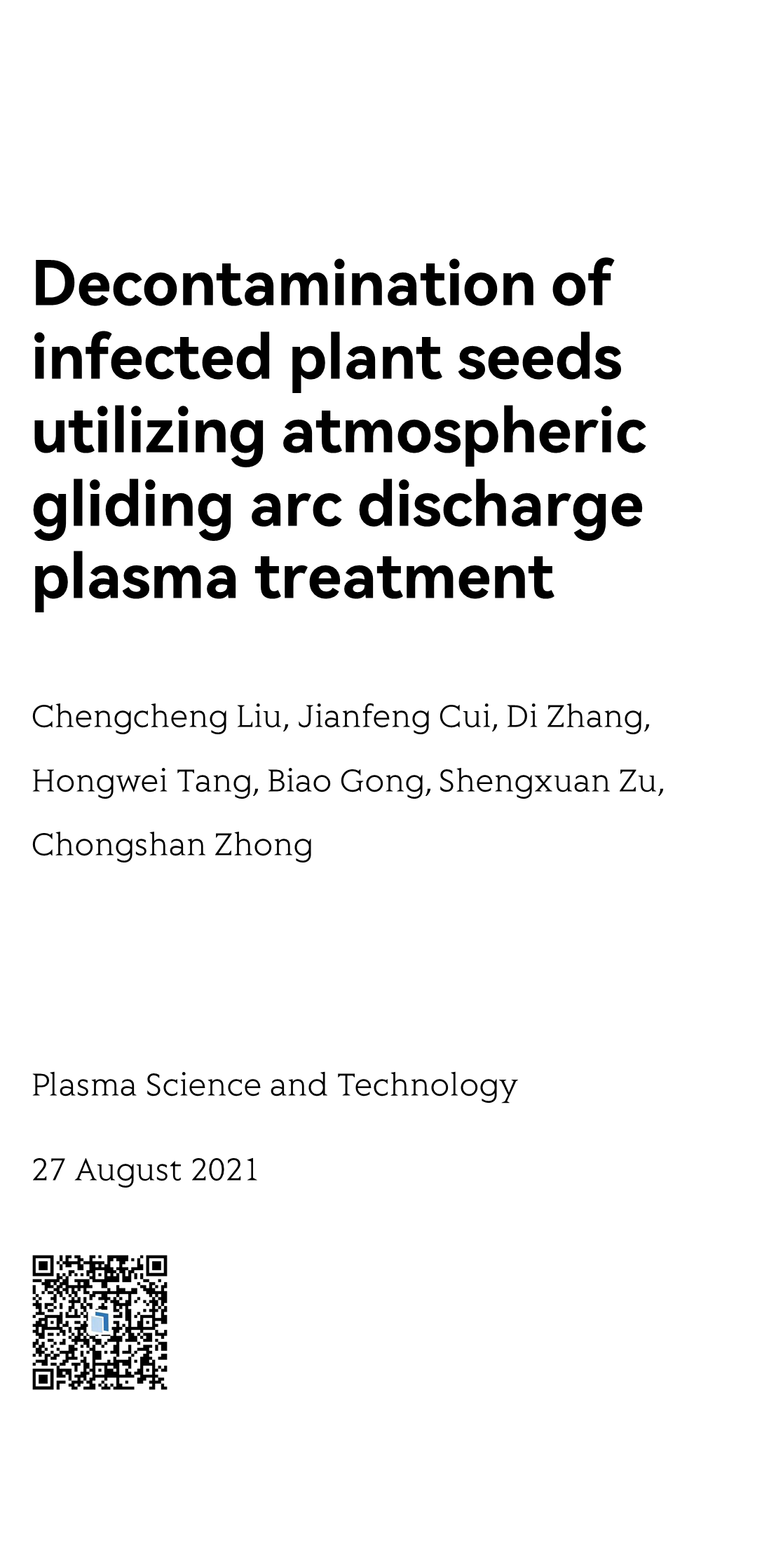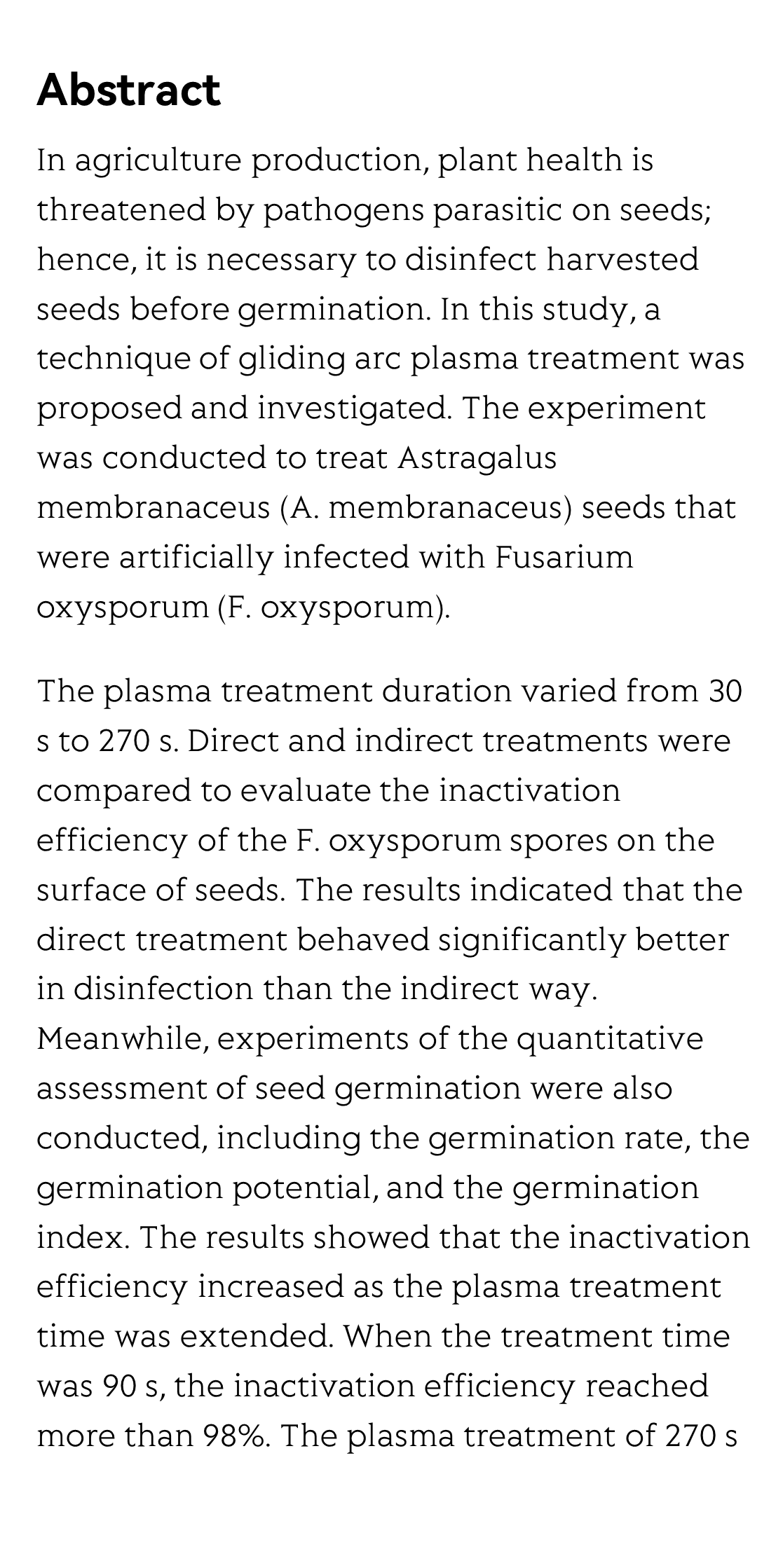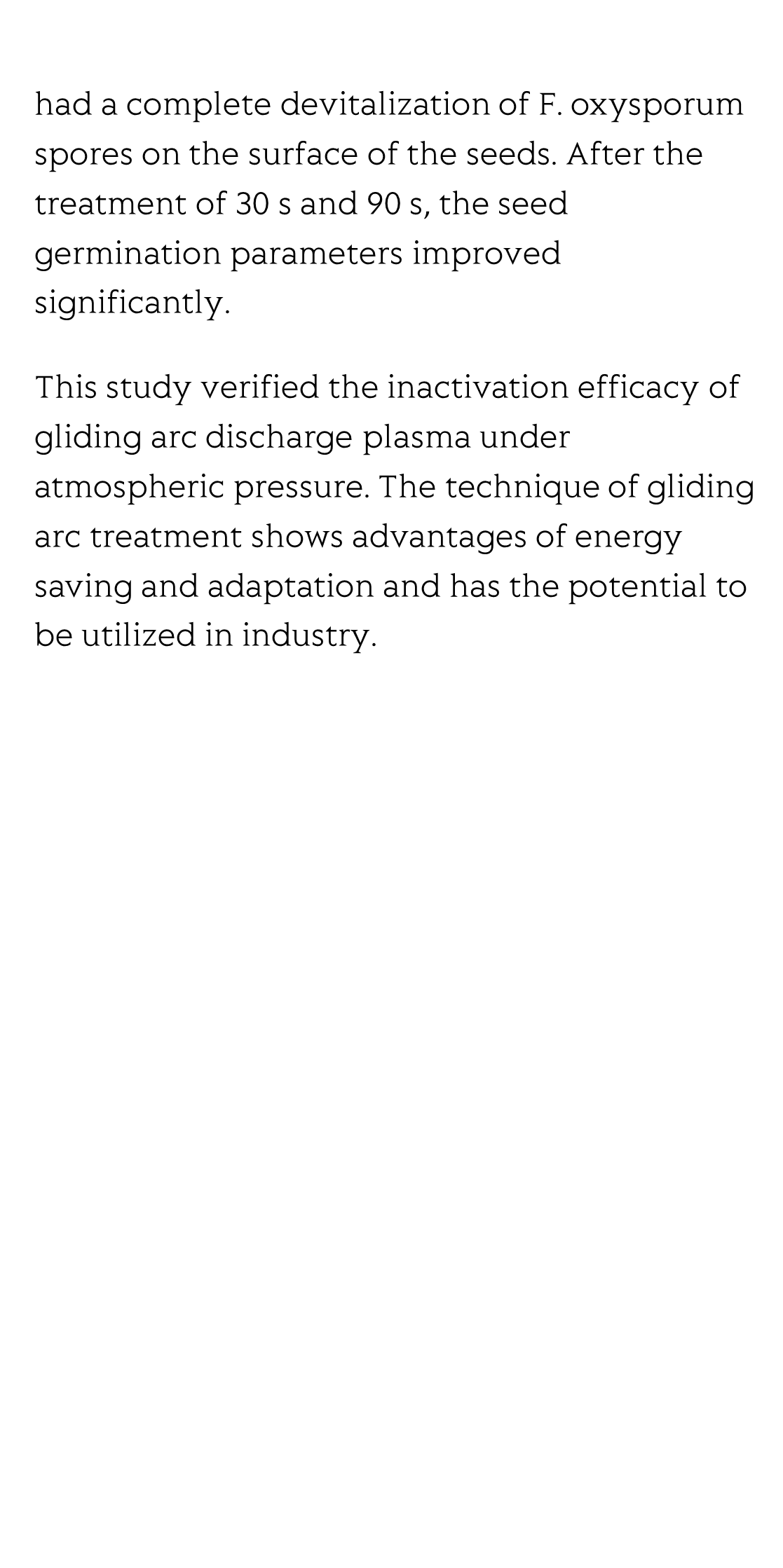(Peer-Reviewed) Decontamination of infected plant seeds utilizing atmospheric gliding arc discharge plasma treatment
Chengcheng Liu 刘成成 ¹, Jianfeng Cui 崔见凤 ¹, Di Zhang 张頔 ¹, Hongwei Tang 汤红卫 ¹, Biao Gong 巩彪 ², Shengxuan Zu 祖圣宣 ¹, Chongshan Zhong 仲崇山 ¹
¹ College of Information and Electrical Engineering, China Agricultural University, Beijing 100083, People's Republic of China
中华人民共和国 北京 中国农业大学信息与电气工程学院
² College of Horticulture Science and Engineering, Shandong Agricultural University, Tai'an 271018, People's Republic of China
中华人民共和国 泰安 山东农业大学园艺科学与工程学院
Plasma Science and Technology, 2021-08-27
Abstract
In agriculture production, plant health is threatened by pathogens parasitic on seeds; hence, it is necessary to disinfect harvested seeds before germination. In this study, a technique of gliding arc plasma treatment was proposed and investigated. The experiment was conducted to treat Astragalus membranaceus (A. membranaceus) seeds that were artificially infected with Fusarium oxysporum (F. oxysporum).
The plasma treatment duration varied from 30 s to 270 s. Direct and indirect treatments were compared to evaluate the inactivation efficiency of the F. oxysporum spores on the surface of seeds. The results indicated that the direct treatment behaved significantly better in disinfection than the indirect way. Meanwhile, experiments of the quantitative assessment of seed germination were also conducted, including the germination rate, the germination potential, and the germination index. The results showed that the inactivation efficiency increased as the plasma treatment time was extended. When the treatment time was 90 s, the inactivation efficiency reached more than 98%. The plasma treatment of 270 s had a complete devitalization of F. oxysporum spores on the surface of the seeds. After the treatment of 30 s and 90 s, the seed germination parameters improved significantly.
This study verified the inactivation efficacy of gliding arc discharge plasma under atmospheric pressure. The technique of gliding arc treatment shows advantages of energy saving and adaptation and has the potential to be utilized in industry.
Flicker minimization in power-saving displays enabled by measurement of difference in flexoelectric coefficients and displacement-current in positive dielectric anisotropy liquid crystals
Junho Jung, HaYoung Jung, GyuRi Choi, HanByeol Park, Sun-Mi Park, Ki-Sun Kwon, Heui-Seok Jin, Dong-Jin Lee, Hoon Jeong, JeongKi Park, Byeong Koo Kim, Seung Hee Lee, MinSu Kim
Opto-Electronic Advances
2025-09-25
Dual-frequency angular-multiplexed fringe projection profilometry with deep learning: breaking hardware limits for ultra-high-speed 3D imaging
Wenwu Chen, Yifan Liu, Shijie Feng, Wei Yin, Jiaming Qian, Yixuan Li, Hang Zhang, Maciej Trusiak, Malgorzata Kujawinska, Qian Chen, Chao Zuo
Opto-Electronic Advances
2025-09-25





